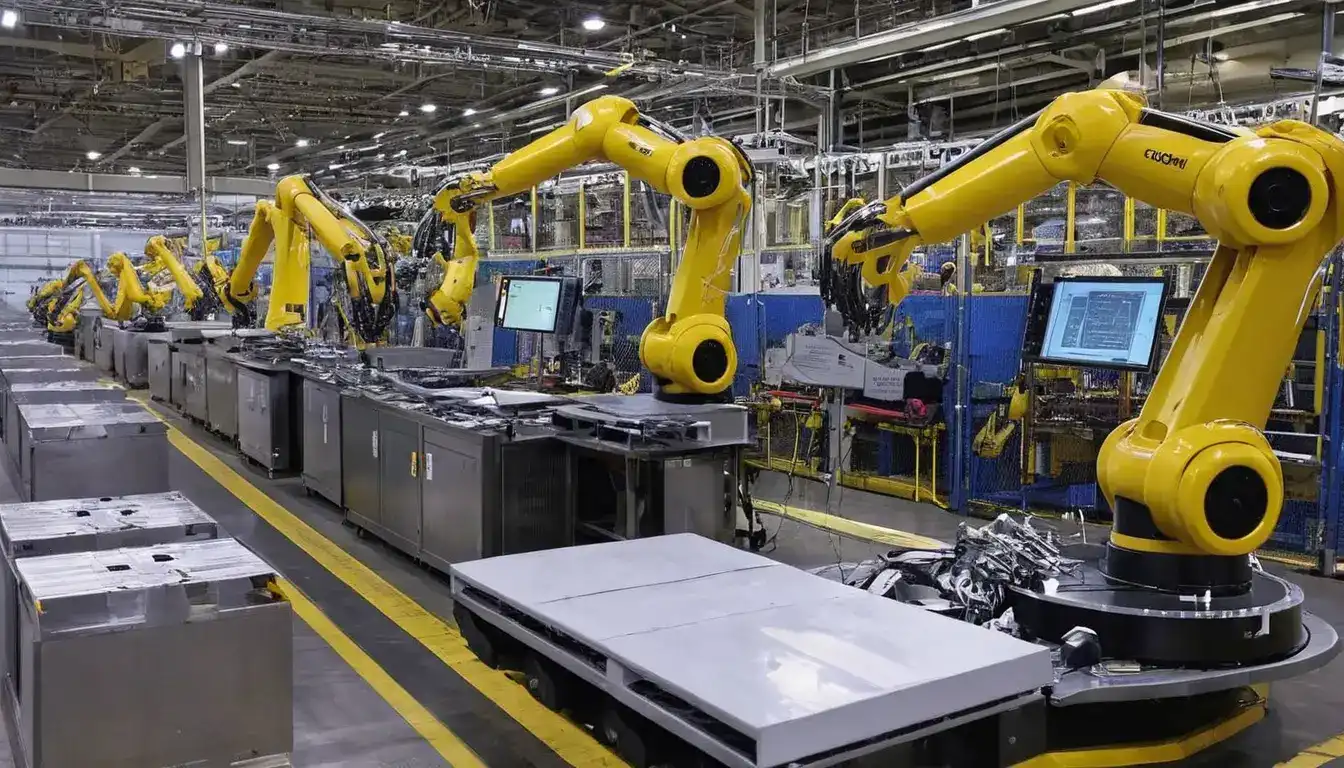Income Inequality: Economic & Social
Emily Willis

Photo: Income Inequality: Economic & Social
Income inequality is a defining challenge of our time, impacting societies and economies worldwide. It refers to the unequal distribution of income among a population, manifesting as a significant gap between the rich and the poor. This disparity isn't just about statistics; it profoundly influences people's daily lives, opportunities, and overall societal well-being. Understanding its multifaceted nature, from its economic drivers to its far-reaching social consequences, is crucial for fostering more equitable and stable communities.
Understanding Income Inequality: What is it?
Income inequality describes how unevenly income is distributed across a population. It's distinct from wealth inequality, which refers to the unequal distribution of assets like property, stocks, and savings. While often related, income is a flow (earnings over time), and wealth is a stock (accumulated assets).
One of the most common ways to measure income inequality is the Gini coefficient. This statistical measure ranges from 0 to 1 (or 0% to 100%), where 0 represents perfect equality (everyone has the same income), and 1 (or 100%) represents perfect inequality (one person has all the income). A higher Gini coefficient indicates greater income disparity. Globally, the Gini coefficient showed a sustained growth in inequality during the 19th and 20th centuries, peaking around 2000 at 0.72 before declining slightly to 0.67 in 2020. However, it's important to note that global inequality remains very high.
The Economic Roots of Income Disparity
The forces driving income inequality are complex and interconnected, stemming from shifts in technology, globalization, labor markets, and fiscal policies.
Technological Advancements and Automation
Technological progress, particularly automation and the rise of artificial intelligence, has significantly reshaped labor markets. While these advancements boost productivity and create new high-skilled jobs, they can also displace workers performing routine tasks. Studies suggest that automation has profoundly impacted wages, particularly for less-educated workers. For instance, research indicates that since 1980, automation has reduced the wages of men without a high school degree by 8.8% and women without a high school degree by 2.3%, adjusted for inflation. The income gap between more- and less-educated workers has grown significantly, with automation accounting for over half of that increase. This "skill-biased technological change" often favors those with higher skills, leading to a widening gap between high-income earners and those in lower-skilled positions.
Globalization and Trade
Globalization, characterized by increasing international trade, investment, and information exchange, has had a dual impact on income inequality. On one hand, it has contributed to reducing inequality between countries by expanding export opportunities for emerging economies and fostering economic growth, lifting many out of extreme poverty. On the other hand, within many advanced economies, globalization has contributed to rising income inequality. This is particularly true as competition from lower-wage labor markets abroad and the offshoring of jobs negatively affect the wages and employment of lower-skilled workers in tradable sectors. Financial globalization, in particular, has been shown to increase income inequality within countries.
Shifting Labor Market Dynamics
Several changes in labor market institutions and practices have contributed to widening income disparity:
- Decline of Unions: The erosion of collective bargaining power for workers in many sectors has reduced their ability to negotiate for higher wages and benefits, which historically helped to ensure a more equitable distribution of profits.
- Stagnant Minimum Wage: In many countries, the real value of the minimum wage has not kept pace with inflation or productivity gains. While some studies suggest that raising the minimum wage can significantly improve the income of low-wage earners and reduce income inequality, its overall impact on household income inequality can sometimes be limited, as minimum wage earners are not always in low-income households or are not the main earners. However, evidence indicates a clear inverse relationship between minimum wage and inequality and poverty.
- Rise of the Gig Economy: The proliferation of precarious work arrangements, often lacking traditional employee benefits and job security, contributes to a less stable income for a growing segment of the workforce.
Tax Policies and Deregulation
Fiscal policies play a critical role in shaping income distribution. In recent decades, many countries have seen a weakening of the redistributive role of the state, with declining tax progressivity.
- Less Progressive Taxation: Progressive taxation, where higher earners pay a larger percentage of their income in taxes, is a key tool for reducing income inequality. However, in many high-income economies, top marginal tax rates have declined, and capital gains are often taxed at lower rates than wages, allowing the ultra-rich to pay lower effective tax rates than middle-class workers. This shift has accelerated the growth of top incomes. Countries with more progressive tax systems consistently show lower post-tax inequality.
- Deregulation: Economic deregulation, particularly in financial markets, has been identified as another broad trend affecting the distribution of income and wealth.
The Far-Reaching Social Consequences of the Wealth Gap
Income inequality is not merely an economic issue; it has profound and pervasive social consequences, affecting everything from public health to social cohesion and political stability.
Health and Well-being
Research consistently shows a strong link between higher levels of income inequality and worse health outcomes for the entire population, not just the poorest.
- Reduced Life Expectancy: Countries with smaller income disparities tend to have longer life expectancies.
- Higher Infant Mortality: More unequal societies often experience higher infant mortality rates.
- Increased Mental Health Issues: Economic disparity contributes to a range of mental health problems, including stress, anxiety, and depression, affecting individuals across all income brackets. High levels of inequality can reduce social cohesion, leading to more stress, fear, and insecurity for everyone.
- Higher Healthcare Expenditures: Studies in the U.S. have found that income inequality is independently associated with higher healthcare expenditures and increased healthcare use, even after accounting for poverty levels.
Education and Opportunity
Income inequality significantly impacts access to quality education, perpetuating cycles of poverty and limiting social mobility.
- Unequal Access to Quality Education: Children from lower-income backgrounds often have unequal access to high-quality early childhood education and higher education opportunities. This disparity in educational investment and quality can depress skills development among individuals from poorer parental backgrounds.
- Intergenerational Poverty: Limited educational opportunities for disadvantaged groups mean that children born into poverty are more likely to remain in poverty, hindering upward social mobility.
- Diminished Human Capital: When a significant portion of the population lacks access to quality education and skills training, it negatively impacts a nation's overall human capital, which can impede economic growth.
Social Cohesion and Trust
High levels of income inequality can erode the fabric of society, leading to decreased trust and increased social division.
- Erosion of Trust: Inequality is linked to a societal breakdown in trust, solidarity, and social cohesion, reducing people's willingness to act for the common good. People living in more unequal societies are more likely to perceive society as less caring and more competitive.
- Increased Social Problems: Research links higher levels of economic inequality to a range of undesirable outcomes, including more crime and social anomie. It is also associated with higher rates of divorce and bankruptcy.
- Political Polarization and Populism: Rising inequality and related disparities and anxieties have been shown to stoke social discontent, driving increased political polarization and the rise of populist nationalism. An increasingly unequal society can weaken trust in public institutions and undermine democratic governance.
Addressing Income Inequality: Pathways to a More Equitable Future
Addressing income inequality requires a multi-pronged approach involving policy interventions, corporate responsibility, and community action. There is no fundamental contradiction between state-led income redistribution and economic growth; in fact, reducing inequality can sustain long-term growth.
Policy Interventions
Governments have powerful tools at their disposal to mitigate income disparities:
- Progressive Taxation: Reinstating and strengthening progressive tax systems, where higher earners contribute a larger share of their income, can fund essential social programs and redistribute wealth. This allows governments to invest in public goods and services that benefit everyone. Evidence from countries like Germany and France, with more progressive tax and transfer systems, shows lower post-tax inequality.
- Increasing Minimum Wage and Living Wage: Raising the minimum wage to a living wage can directly improve the income of the lowest-paid workers, reducing wage inequality. Studies have shown that increases in minimum wage can lead to a reduction in the hourly wage gap.
- Strengthening Social Safety Nets: Robust social safety nets, including unemployment benefits, food assistance, and affordable housing, provide a crucial buffer for vulnerable populations and reduce poverty.
- Investment in Education and Skills Training: Expanding access to high-quality education from early childhood through higher education, particularly for disadvantaged groups, can level the playing field and boost future earning potential. Policies like tax credits, grants, and reduced tuition can improve access to quality higher education.
Latest ✨
View Allcreating engaging content to attract and retain customers in the digital age. It provides strategies for understanding the audience, setting content goals, creating high-quality content, using storytelling and emotional connection, and optimizing content for conversions. It also covers content formats and distribution, measuring and analyzing content performance, and building relationships with influencers and user-generated content.
Emily Willis
Rediscover the power of play! It's not just for kids—it's the secret to unlocking future learning, essential skills, and human potential at every age.
Emily Willis
Unlock startup success! Learn the key differences between business incubators and accelerators. Discover which support system is ideal for your venture's growth...
Emily Willis
The world of work is changing rapidly due to automation, AI, and technological advancements. While some fear widespread unemployment, the reality is more nuanced. The future of work is about humans adapting, reskilling, and exploring new market opportunities. Automation is increasing efficiency and reducing costs, but also shifting the job landscape.
Emily Willis
Business
View All
August 5, 2024
5 Keys to Success in Starting a New Business in the Digital AgeThe digital age has brought both opportunities and competition to the business landscape. To succeed in this environment, it is important to identify market needs, develop a unique value proposition, build a strong online presence, embrace technology and data-driven decision making, prioritize customer experience, and foster a culture of innovation and adaptability.
Emily Willis

June 9, 2025
Succeed with SaaS Business ModelMaster the SaaS business model! This guide reveals strategies for building a thriving enterprise, from understanding the landscape to achieving product-market f...
Emily Willis

June 9, 2025
Step-by-Step Business RegistrationsNew business? Discover why registration is vital for legal protection, credibility, and funding. Our guide simplifies establishing your venture.
Emily Willis
Economy
View AllBeyond crypto hype: Understand digital asset economics. Learn core principles like supply, demand, scarcity & utility to navigate the market wisely.
Read MoreDemystify Forex trading. Discover its vast opportunities and navigate its inherent risks in the world's largest financial market.
Read MoreDiscover the foundations of banking stability. Learn how strong regulations, capital, deposit insurance, and technology build a resilient financial sector.
Read MoreEntertainment
View All
August 4, 2024
Profiles of Famous Artists Who Inspire the Younger Generationthe inspirational aspects of famous artists such as Vincent van Gogh, Frida Kahlo, Pablo Picasso, Banksy, Yayoi Kusama, Jean-Michel Basquiat, Georgia O'Keeffe, Andy Warhol, Kehinde Wiley, and Ai Weiwei. It highlights their perseverance, innovation, authenticity, social commentary, mental health advocacy, and representation, among other qualities, and how these aspects continue to inspire young artists to pursue their creative dreams.
Emily Willis

August 4, 2024
The Latest Music Trends, Artists Influencing Pop Culture, and How Digital Platforms Facilitate the Distribution of Music GloballyThe music industry is constantly changing due to consumer preferences, technology, and the influence of artists. Digital platforms have revolutionized music creation, distribution, and consumption, leading to genre fusion, the rise of independent artists, and collaborative projects. Influential artists like Billie Eilish, BTS, and Taylor Swift have shaped pop culture globally. Streaming services, social media, and direct-to-fan engagement have transformed music distribution. Digital platforms also promote cultural diversity and inclusivity, expand markets and revenue, and drive technological advancements. The industry is also focusing on sustainability and ethical practices. To succeed in the future, stakeholders must embrace digital transformation and champion inclusivity.
Emily Willis

August 5, 2024
Video Games: Enduring Appeal, Immersive Worlds, and Diverse Genresenduring appeal of video games, highlighting their ability to transport players to fantastical realms, challenge their minds, and foster connections with others. It explores the magic of immersive worlds, the vast array of genres available, and the social power of gaming.
Emily Willis
Health
View AllQuality sleep is essential for overall health and well-being, impacting physical, cognitive and emotional functioning. Lack of quality sleep can lead to a variety of health issues, including weakened immune function, heart problems, weight gain and cognitive impairment.
Emily Willis
Maintaining good health involves a balanced diet that provides essential nutrients for the body. A balanced diet includes carbohydrates, proteins, fats, vitamins, minerals, fiber, and water. Benefits of a balanced diet include enhanced energy levels, improved mental health, a stronger immune system, better weight management, reduced risk of chronic diseases, and enhanced digestion. Components of a balanced diet include fruits and vegetables, whole grains, protein sources, dairy or dairy alternatives, and healthy fats. Tips for maintaining a balanced diet include planning meals, portion control, staying hydrated, limiting processed foods, eating mindfully, and including physical activity.
Emily Willis
Regular physical activity is crucial for maintaining long-term health and well-being. It has numerous benefits, including improving cardiovascular health, aiding in weight management, enhancing mental health, strengthening bones, boosting immune function, and promoting longevity.
Emily Willis
Trending 🔥
View All
1
2
4
5
6
7
8
9
10
Lifestyle



Sports
View AllAugust 5, 2024
Sportsmanship in the Spotlight: Cultivating Respect, Integrity, and Ethical Behavior
Read MoreTechnology
View All
August 4, 2024
The Rise of Blockchain Technology: Applications Beyond Cryptocurrency
Blockchain technology, initially associated with cryptocurrencies, has expanded to have diverse applications across industries. It is a decentralized digital ledger that ensures secure, transparent, and immutable transactions. Beyond cryptocurrency, blockchain has been applied to supply chain management, healthcare, voting systems, smart contracts, digital identity verification, real estate transactions, and supply chain finance. Future trends include enhancing interoperability, addressing scalability issues, and exploring regulatory frameworks. Overall, blockchain technology has the potential to revolutionize various sectors by enhancing efficiency, security, and trust in operations.

August 5, 2024
Best AR Apps for Interior Design
Discover the top AR apps for interior design and transform your space with ease! From furniture placement to paint colors, these innovative tools will revolutionize the way you decorate, making your home design dreams a reality

August 5, 2024
AI Trend Predictions for 2024 and beyond
AI is no longer a futuristic concept, it is shaping our world at an unprecedented pace. In 2024 and beyond, AI trends are likely to dominate in various industries. Generative AI is expected to revolutionize content creation, design, and product development. In healthcare, AI will lead to personalized medicine, drug discovery acceleration, improved diagnostics, and remote patient monitoring.

August 4, 2024
AI-Powered Robots Take Over Manufacturing Jobs: Is Our Workforce Prepared?
AI-powered robots are transforming the manufacturing industry, leading to increased efficiency and improved product quality. While concerns about job displacement exist, AI is more likely to transform jobs rather than eliminate them.


















